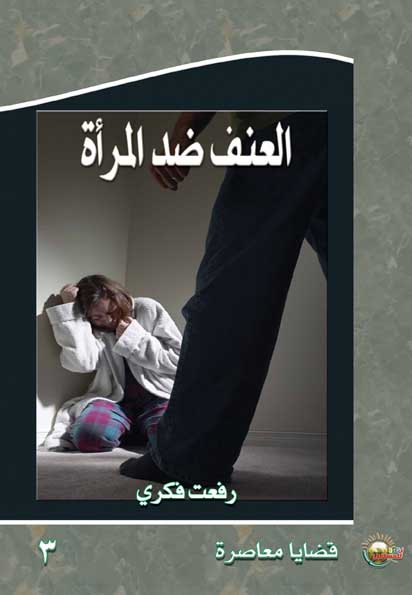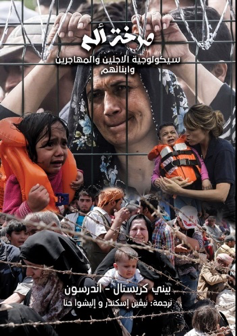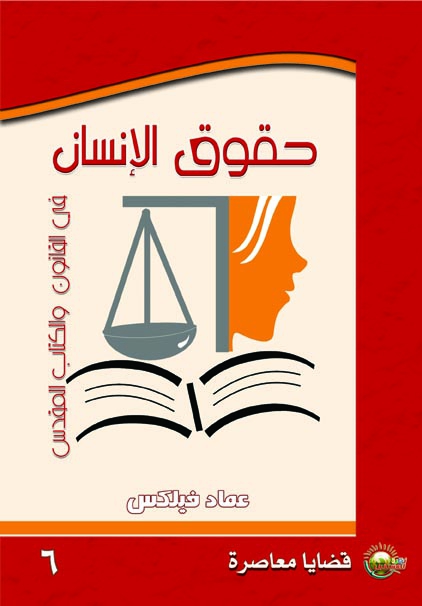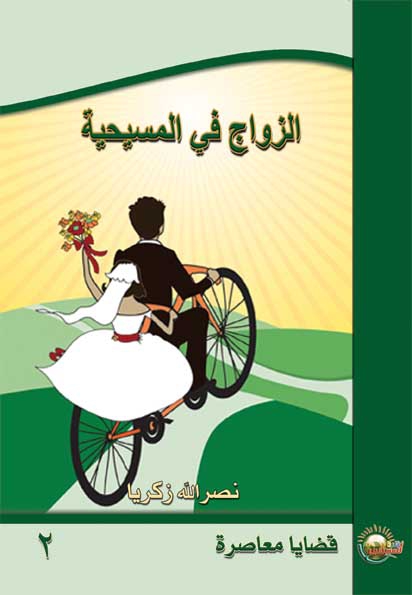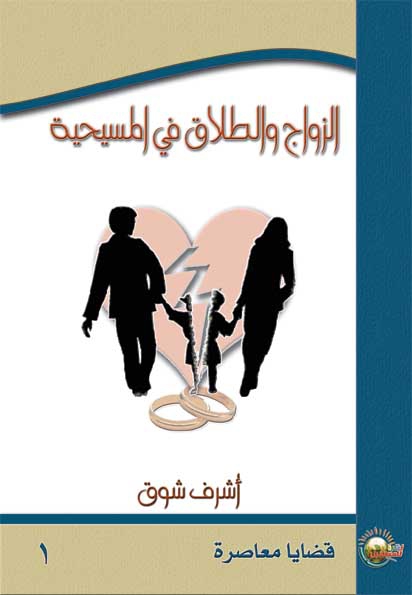Contemporary Issues
The Bible touches on every aspect of our spiritual lives and on our relationships with God. Furthermore, it does not ignore the difficult issues we face in our contemporary lives. It is a book for all times. When we face an issue, we find that the biblical perspective's thinking about it is clarifying. This series deals with contemporary issues (such as divorce, abortion, death and addiction) from a biblical perspective.
Violence Against Women
Author: Rev. Refaat Fekry
Publisher: Vision For Future
This medium sized book of almost 200 pages belongs within the series of "Contemporary Issues" books, published by Vision for Future in 2010.
With the turn of the 21st century, and despite the tremendous progress man has attained at every level in all areas of life, from science, to technology, to the communication revolution, it is unfortunate that his tremendous progress has not been able to guide humanity to real peace, compassion, love, or harmony. Great manifestations of racism, savagery, barbarism, and ignorance continue to be rooted in the human psyche, as if it refuses to shake off those old drawbacks and disadvantages, despite the psyche's change of external robe. Among the most negative of manifestations is "violence against women." This violence is an aspect of the "cultural heritage with a long history dating back to the days of jahiliyah, when man had been proud to commit female infanticide, as a symbol of scandal and disgrace."
But first! The universality and commonness of violence against women...
It is indisputable that violence against women is gaining a global dimension which now goes beyond all cultural, religious, and cognitive boundaries. It affects all societies, even civilized ones. Women in every country of the world, without exception, are exposed to violence in all its forms and expressions. It is a phenomenon that has its roots in the chauvinistic culture that turns women into inferior objects. It is a trend of discrimination, between them and the opposite sex, under the pretext of an unevenness and disparity in power that exists between genders. And it is justified by several other reasons, including the weakness of economic and social levels (unemployment and poverty are often cited). Finally, however, woman is the one unfortunate enough to be oppressed and persecuted in all societies, without exception.
Second, violence: the meaning and the linguistic connotation...
In this context, the writer addresses: violence from a social perspective, discrimination and violence, gender based violence, violence as a means, symbolic violence, types and forms of violence that is enacted towards women, and expressions of violence.
Third: "Violence against men," will it even get a reaction?!
Violence against men, according to the author, is an unusual situation that can be attributed to the following reasons:
First: The violence we see against some men may be a woman's own self-defensive reaction against being the object of violence, and may happen in situations where men act violently against women, so that she is then responding with equivalent or lesser violence.
Second: It may be a result of a woman's psychology, roots going back to their being harshly treated in childhood and during youth. Being raised in a violent environment could result in growing up to be violent. This interpretation is relative and does not apply to all cases.
Third: Some will observe that violent women marry spineless men. Accordingly, the women in these cases bear great responsibility for their homes and their children. This responsibility may drive them to use violence and tyranny, because they assume the status of the man.
Fourth: The violence of women can be a case of delinquency, in the cases of women who use drugs and alcohol. This behavior alters their feminine nature into a violent nature.
Fifth: It is also not uncommon for there to be a big age difference between a husband and a wife. In such cases, part of the violence may include divorce, separation, and the subsequent denial of the father from seeing his children. This can also stem from arranged or marriages of convenience, and from the lack of social compatibility between husband and wife.
Addressing the general reasons for violence in the Egyptian society, the author cites the single most important factor leading to violence between individuals in a community as the experience of frustration. Politically based factors have greatly affected the spread of the phenomenon of violence in Egyptian society in recent years. The most important example in this vein is the terrorism caused by extremist religious thinking, wherein people apostatize, eradicate, and enslave one another. Further, the economic situation affecting Egypt's society also incites the spread of violence in the community. Situations of poverty, unemployment, loss of jobs, and inflation, all stir up aggression. In some cases, economic conditions become catalysts for acts of violence, such as bullying, extortion, or ransoming for money.
These all form a backdrop for the phenomenon of violence against women. Having set the stage, the author next underlines the importance of addressing the causes, patterns, and repercussions of violence against women.
The causes of violence against women:
1. The woman herself
2. Cultural reasons
3. Educational reasons
4. Customs and traditions
5. Environmental causes
6. Economic reasons
7. Governments and authorities' violence
8. Repercussions of the disastrous wars
9. Negative effects of deterioration of education, health, and environment
Patterns of violence against women:
Violence against women has different patterns, with multiple shapes and types. Women face violence in almost every stage of their lives. Whether inside or outside the home, whether in the father's or the husband's household, whether on the street or at work, violence is inseparable from her wherever she goes. Complicated as this picture becomes, and difficult as it is to distinguish and disentangle the different forms of violence, and women's enduring sense that she is under attack, monitoring patterns of violence against women and seeking to understand and learn from these experiences is important.
The author identifies seventeen forms and places of violence against women, and addresses them in the following order:
1. The cultural violence
2. Prenatal violence
3. Domestic violence
4. Female Genital Mutilation, not about purity, an act of butchery
5. Incest as a form of violence against women
6. Child labor, a kind of forced labor
7. The violence of food discrimination
8. The violence of discrimination in learning opportunities
9. Violence because of honor crimes
10. Child marriage as a form of violence against women
11. Marital violence
12. Violence against spinster and single women (divorced, widow)
13. Media Violence
14. Legal violence
15. Economic violence
16. Political violence
17. Moral psychological violence
As to the effects of violence against women, the writer quotes Dr. Haifa Abu Ghazaleh statement: "Violence against women is a violation of women's human rights. It prevents women from enjoying their human rights and fundamental freedoms, such as the right to life, security, health, education, housing, and the right to participate in public life. This has disastrous health and social consequences and economic costs.
"Violence against women" results in physical, psychological and social effects on women and has its consequential effects on the family and society as well. The author then lists these effects at varying levels of detail.
Addressing the position of Christianity on violence against women, he says, " Christianity rejects all types of violence, whether physical, verbal, or moral violence. Christ also rejected the principle of aggression against any other human being, irrespective of his color, gender, religion, or doctrine, or ideology. Christianity believes that all humans are God's creation and all of them are equal in dignity. As the Bible says, women in Christianity are not independent of men, but are completely equal to him. God Almighty created Eve to be a helper, and this word means full equality.
In this context it is necessary to focus on the attitude of Jesus Christ toward women. Through the teachings of Jesus, and through his actions, it is clear that Jesus intended to provide the following values and principles as a model for his followers:
1. Jesus Christ considered woman a human being and not as something
2. Christ freed the woman from the violent authority of man
3. Christ permitted woman's education
4. The spiritual and religious level of women
5. Jesus Christ accepted followers from women
6. Christ accepted Service from Women
7. Women among the Disciples of Christ and His apostles
The author poses a noteworthy question: "Is there any cure for violence against women?" He tries to provide an adequate and realistic answer to this question. He concludes his study with a flashback to the past, under the title of "The ancient Egyptians and women... the Egypt which was and which has become!"
Egypt's mind and heart rose in the everlasting pyramids of Giza, bearing witness to the glory and civilization of this mother of human history. Her civilization can be credited for much of the progress and development of the whole world. This civilization's light has emerged, and has reached every part of the world.
The world stood dumbstruck before this civilization's deep-rootedness in history's depths. What has become of Eve's position and stature, in this land of freedom, civilization, and ancient glory? Why do past and present not relate? Why is Eve's status not elevated in Egypt, in connection with her glory in the distant past? We are proud descendants of great ancestors, who contributed greatly to the core of world history, for nearly seven thousand years. And we are the descendants of the builders of the pyramids in a primordial age. So why are we not worthy successors to these great predecessors? And why have those great appearances female characters not recurred, such as Hatshepsut, Nefertiti, Nefertari Cleopatra, Shagar Al Dorr, and other Egyptian women who entered history by its wider doors, writing its brighter pages? Let us take a lesson from our history.
What has happened on the intellectual and cultural scene that contributed to the spread of those chauvinistic ideas, calling for the return of women to stay at home, or that she is not good enough to be a judge or a President of a Republic, or ... or ..... and other similar ideas, which echoed between now and then. They echoed in those outdated centuries. And all of it makes us wonder: What happened to Egypt? What changed the view of Egyptians regarding woman? And who pierced the minds of Egyptians, making them demand the return of their women to stay at home, and making them say she is not suitable to take over certain posts and positions? Do we have the courage to answer: Who stole the mind of Egypt?
